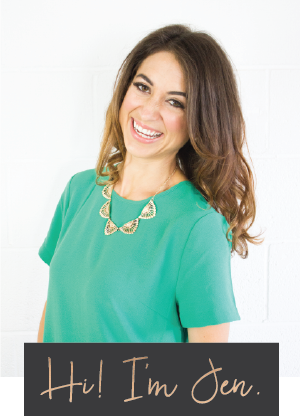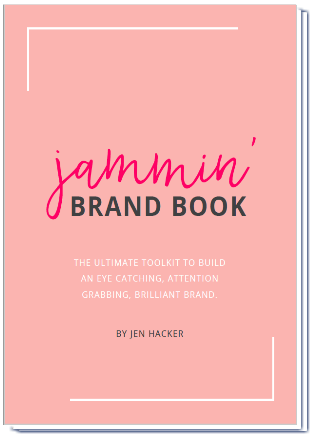In August, Jessica Sabogal journeyed to Bogotá, Colombia with her best friend to carry out a larger-than-life mission: to paint a mural honoring the struggle of women in her parents’ native country. In her own words, she shares her experience with The Single Diaries, then Catherine gets the exclusive on her process, her inspiration and what’s next for this artist.
.jpg)
“Women Are Perfect” begins in Bogotá, Colombia
I am in Bogotá, Colombia, my father’s birthplace, with the intention of doing something I’ve never done before: creating a 50’ x 9′ mural honoring the group most affected by Colombia’s 49-year long civil war, las mujeres.
When I learned that 18% of Colombian women—or 489,687 mujeres—were victims of sexual violence between 2001 and 2009, I immediately thought, “That’s half the population of San Francisco.” It was then that I envisioned a piece that would reflect my reality: a world in which women embrace their perfection, a world in which these crimes against humanity cannot exist.
Over the course of ten days, I teamed up with local artists, figuring out how to collect the supplies I need to transform this vision into something real and somehow explain to my abuela why I’m spray-painting on the streets of this 613 x 613 mile city.
Day 3: Finding the Perfect Wall
I’ll never forget what my godfather told me when I was 12: “Sometimes all you have to do is ask.”
Crisp, the Australian street artist who worked with us on this project, showed me and my crew around dozens of Bogotá’s blocks, with his eight-month-old baby strapped to his body. We spanned the length of wall after wall with measuring tape to see if my big idea would fit. I realized we had quite the task ahead of us. All of the walls were way too short, not wide enough, etc. etc. Then there’s the whole “getting permission” thing.
As we passed a barrio that might not have been the safest for us to be walking around in, we spotted it. My wall. That had to be my wall. So here we were, 1 Aussie, 2 Americans (my best friend Lauren and I), and a baby, in front of the factory this beautiful wall belongs to.
I took a deep breath and knocked on the only door of the building. A man covered in cement residue answered, obviously puzzled by the band of misfits in front of him. If there’s one thing about Colombians, it’s that we’re smooth talkers. I put on my brightest smile and told him my life story (maybe with a little exaggeration). It went something along the lines of having the Colombian government fly me in and grant me special permission to paint walls all over the country. I basically made it seem as if my mural would be a huge favor to him and his whole family. He smiled politely, asked us to give him a moment, and closed the door behind him. We waited for 15 minutes as workers filed out one-by-one for their break, all closing the door behind them.
Before I knew it, I was entering THE jefe’s office. This was the man with the money, the one with full control. I didn’t have time to take deep breaths. I sat down and told my story one more time. All I kept thinking was, “Sell it, Jessica, sell it.” After a moment of silence, his million-dollar smile revealed his amusement with my story (me looking like a 16-year-old girl probably helped too).
“You can have the wall,” he said. “Just make sure to clean up after yourself.”
We fist-pumped our way out of there. For once, I understood what it must feel like to be Heisenberg.
Time to paint…
Day 4: 17. Hour. Day.
Three paint shops in three different areas of this gigantic city, torrential rain with a side of hail, two lengthy cab rides, three trips on the Transmilenio (the public metro system), including one during rush hour among 300 people antsy to get home, all the while lugging a 5-gallon bucket of paint and three bags stuffed with brushes and cans. Survival never felt so good.
.jpeg)
Day 6: “The more afraid I am of something, the more I know I have to do it.”
When I have a big idea, I am completely terrified. I put it off and come up with a million reasons why I can’t do it. The idea goes to waste.
Before my trip, the evil cycle kicked in: I’ve never painted outside. I’ve never used this technique. A million things can, and will, go wrong. But I’m at the age where I’m either going to work a 9 to 5 for someone else, or I’m going to go BIG and be a boss (#LeanIn, @SherylSandburg).
At home in San Francisco, I worked really hard to save money for a project that would do exactly that. On day 6 of this adventure, all the events leading up to this moment flashed through my mind: committing after just three weeks of planning, improvising when we couldn’t find the “right” materials, having my family question my every move at every moment. After all of that, we still made it happen.
On day 6 I asked myself why I haven’t been doing this the whole time. What have I been so afraid of? The flow and rhythm of our work revealed that my body naturally follows exactly what my heart and mind want to do, as I carefully cut each detail of my stencils and cover the spaces they leave with my cans. This is my destiny.
.jpg)
Day 9: Before the Finish Line
This day began with rain, soggy prints that didn’t cut right, and overall exhaustion. But it wasn’t hard to see what makes the rough patches worth it. I have a team who keeps things moving, true love for my job and now, a healing boost of energy from seeing my four ladies complete.
I realized that no matter what the circumstances are, I am committed to living a fulfilled life. Because of that, there is absolutely nothing to stress out about and everything to be grateful for.
.jpeg)
Day 10: ¡Que Sigan Adelante!
On day 10, I left my mark on the land where my parents were made. On day 10, I proved a lot of people wrong. On day 10, I proved myself wrong.
So many people were concerned for our safety on this journey. Kidnappings and robberies are no myth here, so two little American girls running around the capital by themselves had my familia uneasy and literally praying for the best. When I first began to seek out walls, Bogotá was in an uprising. There was a huge agricultural strike that had roads blocked, students protesting, and the police throwing tear gas. But today, we did it. Today, I became a street artist.
As a woman, there will be people telling you how to live your life, how to act, how to look, and how to be. There wasn’t a day on this trip when someone didn’t tell me how to be all of those things. But I knew that what I was doing was bigger than any one of them could understand, so I let them talk and continued my work. In the end, the piece spoke for itself.
People told me that seeing me do what I love helped them realize that they weren’t actually happy how they were living. People told me that my four little ladies brought them joy, even for just a moment as they walked by the wall on their way to work.
These are the reasons I paint. These are the reasons I am alive.
.jpeg)
.jpeg)
Back in San Francisco, Jessica gives Catherine the exclusive on what’s next…
I first met Jessi when we were five-year-old ballerinas. During our first conversation, my know-it-all attitude ensured it would be the last… until we met again in high school through her childhood best friend and my high school pal Laurenmarie Reyes. Since then, I’ve been in a constant state of awe over Jessi’s many talents.
C: I know you’ve always been creative, but when did you find your current medium and how did it lead to where you are now?
J: Although my brother would hand me Ren & Stimpy cartoons to copy around age 5, I was always interested in design. During my last year of college, Shepard Fairey started to come out with his cool and unique stencils. I had never seen anyone do street art that way. Sure there was Banksy, but Banksy’s stuff isn’t as precise and perfect. His composition was really on point. So I took an image of a little boy and made it into my first first-layer stencil. I bought $3 cans of spray-paint at home depot and tried it; it was the coolest thing I’d ever done. I did that same little boy for a year. Then I figured out how to do two-layer stencils, then three-, then four- and so on. As I get better and better, I figured out how to up the layers and photo-realism but also the composition and the colors and how they work. Now people are starting to know me for colors, which I didn’t expect.
C: Tell me about an experience since college that pushed you to move toward this dream.
J: I was living in Northampton and saw this “For Rent” sign on a retail space. My best friend and I came up with an idea to do a weeklong pop-up shop. We rented it for $100, and that experience taught me I could do anything: I had shirts, toys, anything I ever painted and threw a fat party with chicken and waffles. I realized “Wow. If this is what I can do after doing this for a year, imagine what I can do when I actually know what I’m doing.” We were in a suburb right before we moved back to San Francisco so I thought, “now I have to go big in my hometown.”
C: Who are the four women in your mural?
J: The two with the hats are little campesinas—girls from the super rural parts of the country where there’s likely to be guerilla activity. These two little girls are probably the most affected by the 50-year civil war in Colombia. The Middle Eastern woman with the veil in the middle is a face to symbolize solidarity with other movements going in that part of the world. When there’s struggle anywhere, women are truly the ones fighting the fight. Our struggle is everyone’s struggle. The last one is Karmen Ramirez Boscan, a leader of the Wayuu indigenous people of La Guajira, Colombia. She works as a consultant for the International Labor Organization (ILO) and Office of the High Commissioner for Human Rights (OHCHR) in Geneva, Switzerland, defending the right of her people. In this mural, she’s the symbol for women’s rights and the female voice that you don’t hear in the mainstream media.
C: How do they inspire you?
These four women represent the women of Colombia. My cousin Andrea said it best when we were talking about the violence and what’s happened even to our family. “You can’t stop living your life just because this is happening. You have to go to work. You have to ride the bus. You can’t live in fear.” Their living with bravery inspires me to live a life without fear. For example, I’m worried about a project I have coming up, but I realized I don’t have to walk to work with the fear that my head will get blown off. It’s inspired me to know my place, to know my privilege and to know where I came from. My parents left Colombia in search of a better life for my brother and I, but it just as easily could’ve been me physically fighting to live a normal life there. I could’ve easily been one of the campesinas in my mural. But that’s life, eh?
C: Now that you’ve accomplished something you didn’t think possible, what’s your next “dream” project?
J: I’ve been traveling the world searching for these artists to work with when there’s tons of people right here at home that I dream of collaborating with. The piece in Colombia was the first thing I’ve ever done outside. It was addictive as hell. I want to hit it hard here at home, and hopefully work with the amazing pool of artists that literally live right next door to me. I’d love to work with local artists like Favianna Rodriguez and Dignidad Rebelde, and brands like Cukui, which is local to the Bay, and Bucketfeet.
C: How do you plan to continue to empower women and educate people on women’s issues?
J: My team and I have a grand scheme to travel the world and work with different women’s organizations putting on workshops about what they would want to see walking to school or work—important issues in their neighborhood that aren’t being talked about—then blow everyone out of the water by having these young women participate in the project and feel ownership of their community. I could design their faces and make them part of the art to open their minds and empower them to realize that they are bigger than themselves. “If I can do this, what else could I do?”
We’re starting in San Francisco under La Galería de la Raza to work with a group of girls who live in the Mission district who don’t feel at home in their own neighborhood with all of the gentrification happening in the city. The final piece will be unveiled in December.
C: What does a “fulfilled life” mean to you?
J: To be able to take care of all the important women in my life—someone as obvious as my mom or my best friend Lauren who was part of the crew in Bogotá, but also these women in my mural who are symbolic of all Colombian women, even if I’m only able to take care of them by making them smile. After I painted the mural, people were sort of in awe; it snapped them out of their daily routine. Something as simple as that or something bigger like leading a women’s group and teaching them how to cut a stencil—giving them tools that offer freedom of expression, awakens them, reminds them about the bigger picture of happiness, spirituality, connectedness… that would be fulfilling.
.jpg)
To follow Jessica’s projects and work and to join the #WomenArePerfect movement, visit her website and like her on Facebook.
Catherine Abalos is editor and founder of The Single Diaries.





























